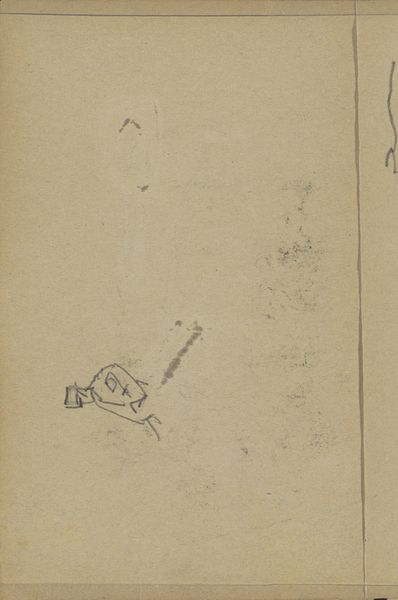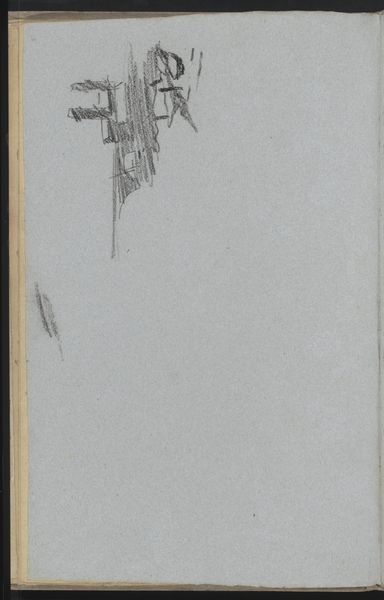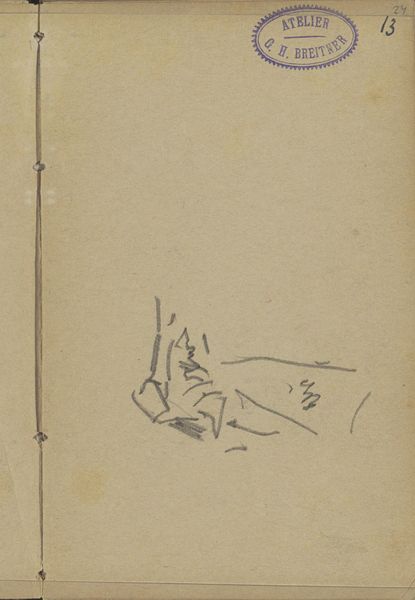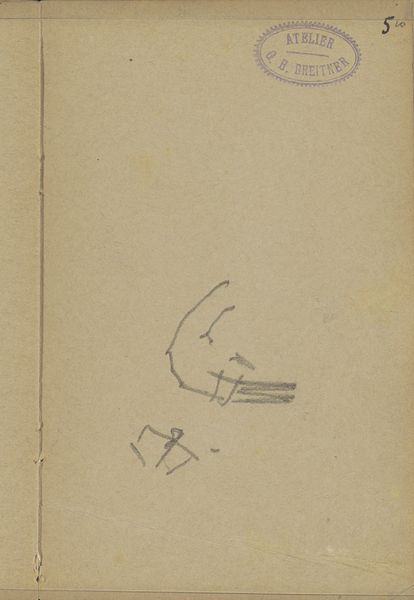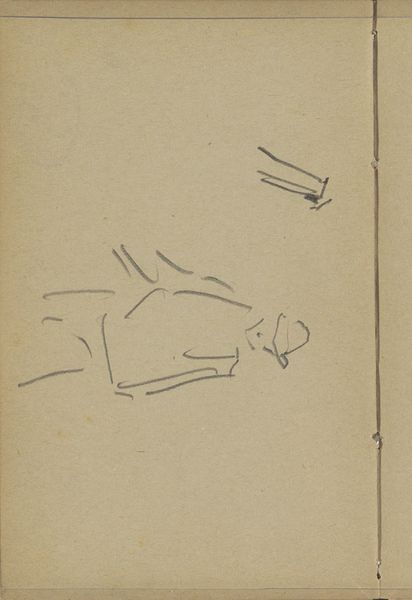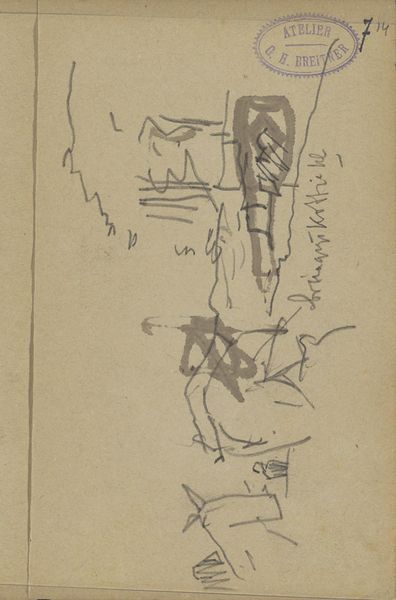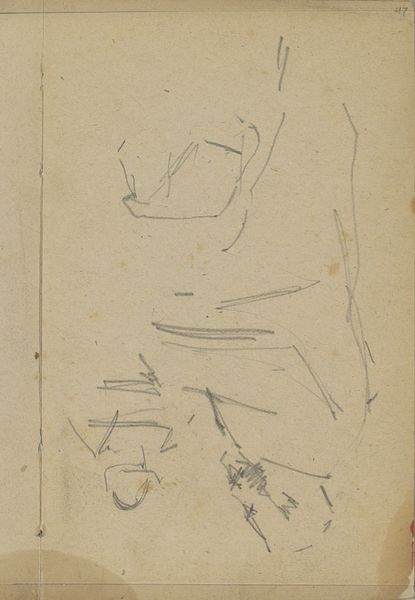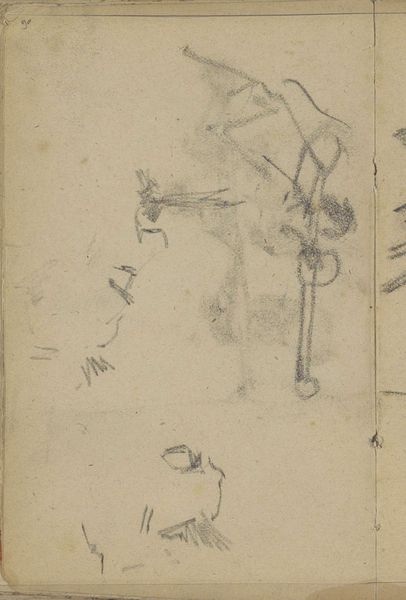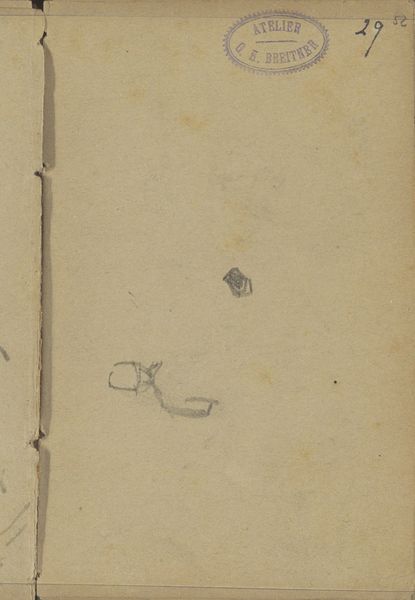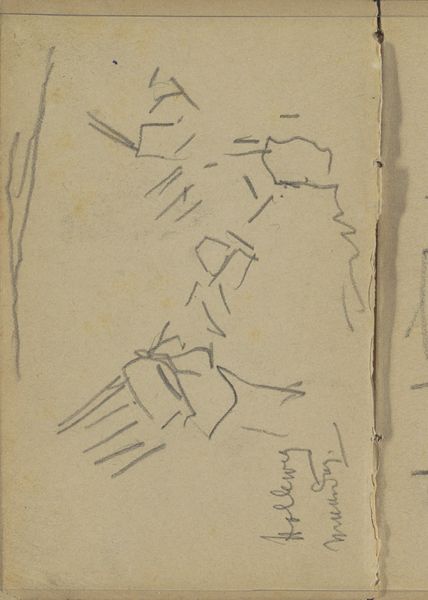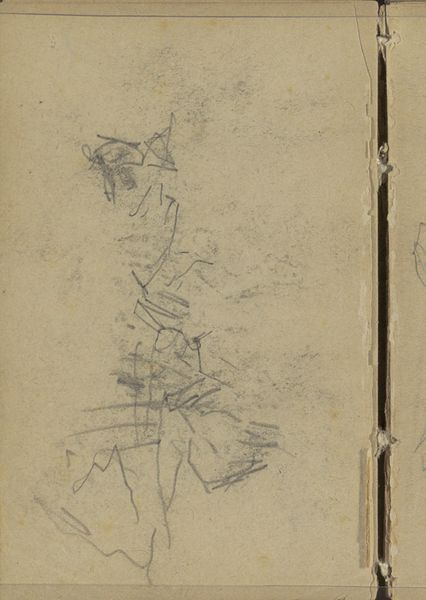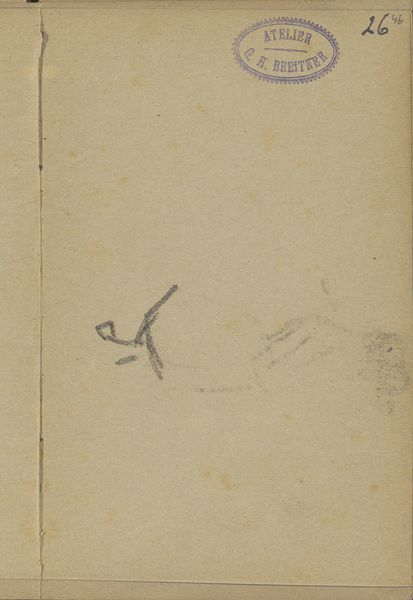
drawing, paper, pencil
#
drawing
#
aged paper
#
toned paper
#
light pencil work
#
impressionism
#
sketch book
#
figuration
#
paper
#
personal sketchbook
#
idea generation sketch
#
sketchwork
#
sketch
#
pencil
#
sketchbook drawing
#
storyboard and sketchbook work
#
sketchbook art
Copyright: Rijks Museum: Open Domain
Curator: Welcome. Here we have a glimpse into the working process of George Hendrik Breitner with his "Two Figure Studies," sketched between 1887 and 1891. Editor: They're spectral! Look at the wisps of graphite against the toned paper, figures emerging and dissolving at once. Curator: Indeed. Breitner favored capturing fleeting moments of everyday life. You see him here using rapid, light pencil work, clearly more concerned with immediacy than precision. It's as if he's chasing after a half-formed thought. Editor: The means of production are so naked here: just pencil on paper, likely from a humble sketchbook. I'm fascinated by this unfiltered access to the artist’s preliminary explorations, this glimpse behind the curtain. Breitner’s studio stamp on the page makes it undeniably "art," but also invites us to consider the blurred line between formal study and simple, manual labor of practice. Curator: A valid point! And think of this 'labour', and of Breitner in his time. He embraced photography—unusual at the time—but in drawings like this, you sense an impulse distinct from photography. A craving not just to record, but to feel, through the quickened pulse of his hand, the very essence of human form and movement. Editor: Right, the labor is not about accurate replication, but of grappling with the body in space, its fleeting posture under strain. It speaks to a relationship with materials, the availability and affordances of humble tools like pencils, that opens art making to different economies. We need to examine the social realities that determine these artistic choices. Curator: Precisely. Breitner sought authenticity, even raw feeling, and this comes through in the most fundamental material choice, the sketchbook—the intimate space where impressions become art. It invites you to look more deeply! Editor: This sketchbook sheet is far more than a preliminary work; it’s a reminder that art exists within material, social and economical conditions and challenges our definitions of artistic value and skilled work. Curator: Thanks. Seeing how the rough material informs the work reminds us not only of how the final form evolves but also that these simple lines offer a deep connection, across time, with the very pulse of creative intention.
Comments
No comments
Be the first to comment and join the conversation on the ultimate creative platform.
